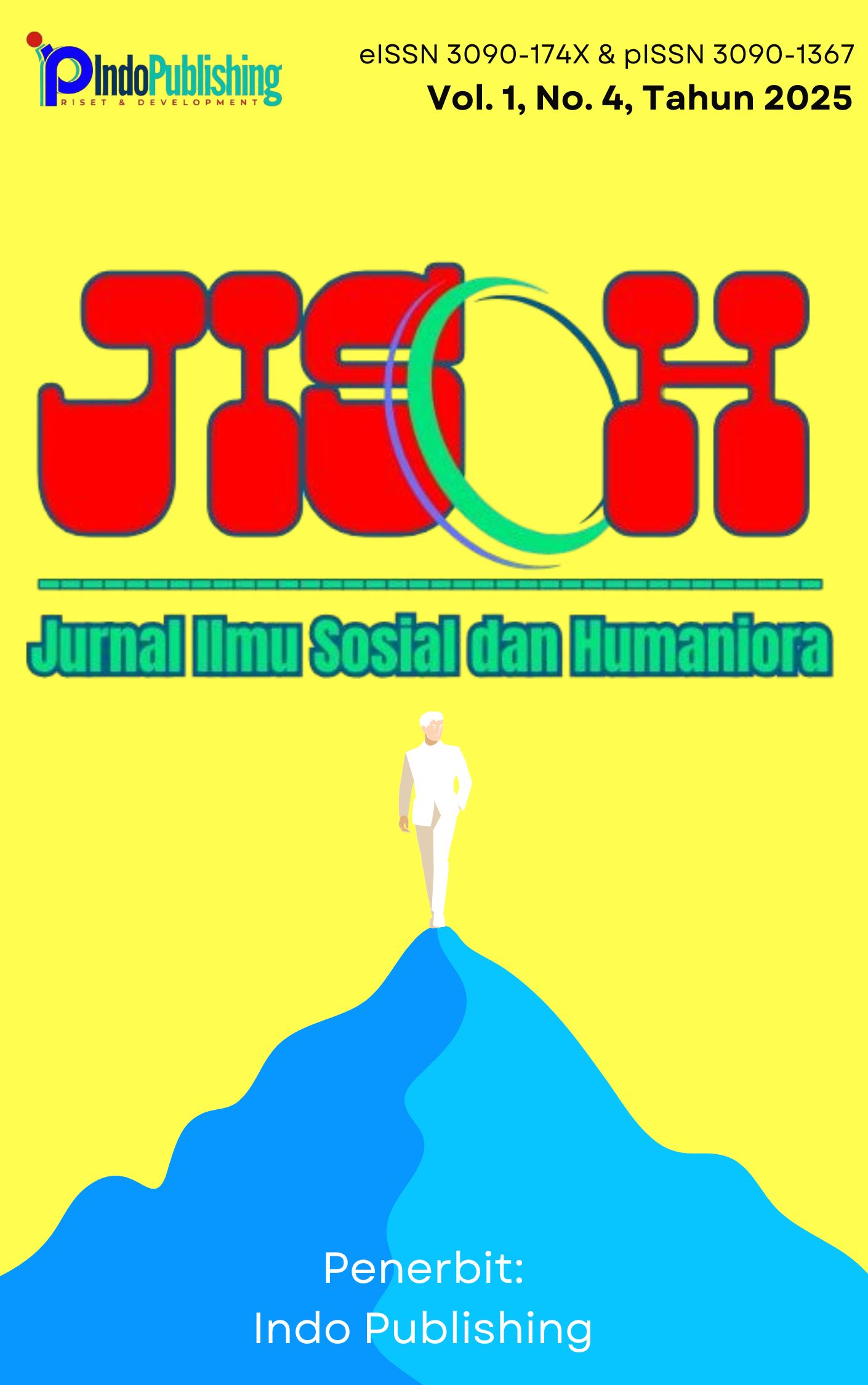Reconfiguring Postwar Class Relations: A Literary Sociology Analysis of The Representation of Laborers and Aristocrats in ‘Lady Chatterley's Lover’
DOI:
https://doi.org/10.63822/7pdbf328Keywords:
Human; Freedom; Society; Lady Chatterle’s LoverAbstract
Lady Chatterley's Lover (2022) is more than just a story of forbidden love; it also depicts the conditions of social class, gender inequality, and one's struggle for independence in a restrictive society. This article, from the point of view of literary sociology, tries to see this film not only as entertainment, but also as a social story that criticizes power relations in marriage, old rules, and noble class levels. The relationship between Lady Constance Chatterley and Oliver Mellors, who come from two vastly different worlds, shows how love can be a way to go against the rules. On the one hand, Connie's marriage to Clifford shows how emotionally alienated she is and the demands of status; meanwhile, her relationship with Mellors grows in a place of freedom-in nature-and reflects her search for a more honest and real relationship. From this analysis, it can be seen that love in this movie is not only about two people falling in love, but also about the struggle to regain control of oneself, choice, and the right to speak-especially for women in a society full of rules. So, Lady Chatterley's Lover is not only about love, but also expresses the desire to be fully human again, in a world that often doesn't care about feelings.
Downloads
References
Noktah Hitam Agama dalam Cerpen”Madame Baptise” sebuah Tinjauan Sosiologis”. Vol.35, No.1 Tahun 2011, 44-54. Wibowo, A. (2013).
Amono, S.D. (1978). Sosiologi Sastra Sebuah Pengantar.
Barnwell, A. (2024). Love Across Class. British Journal of Sociology.
Carey, R. M., & Markus, H. R. (2017). Social class shapes the form and function of relationships and selves. Current Opinion in Psychology, 18, 123–130.
Fenge, A. (2018). Another Class: The Lady’s Maid in Short Stories 1920–1950 (pp. 93–114). Palgrave Macmillan, Cham.
Foster, J. (2010). The Aristocracy of Labour and Working-Class Consciousness Revisited. Labour History Review, 75(3), 245–262.
Gray, R. (1981). The aristocracy of labour in nineteenth-century Britain, c.1850-1900. Jakarta: Pusat Pembinaan dan Pengembangan Bahasa Depdikbud. Endraswara, S. (2005). Jurnal Ilmu Sosial, Vol. 5, No.2 Tahun 2006, 77-87, http://ejournal.undip.ac.id. Nurgiyantoro, B. (2011). Teori Pengkajian Fiksi. Yogyakarta: Gadjah Mada University Press. Ratna, N. K. (2014).
Kritik Sastra. Bandung: Angkasa. Sudjiman, P. (1988).
Lane, M. (2014). Not the Boss of One Another. Cultural & Social History, 11(3), 441–458.
Memahami Cerita Rekaan. Jakarta: Pustaka Jaya. Wahyuningtyas, Sri, dan Santosa, W.H. (2011). Sastra: Teori dan Implementasi. Surakarta: Yuma Pustaka. Waluyo, H. J. (2011).
Metodologi Penelitian Sastra: Epistemologi, Model, Teori, dan Aplikasi. Kemendiknas Badan Penelitian dan Pengembangan Pusat Kurikulum. (2010).
Miller, C. P. (2020). Erotic Class Masquerade: Sex and Working-Class Dialect in D.H. Lawrence’s Lady Chatterley’s Lover. 6(1).
Novriansyah, Y. (2006). “Kritik Sosial dalam Komik Strip Pak Bei”.
Nurholis, M. H. (2019). Pengantar Sosiologi Sastra. Pustaka Setia.
Pasung Jiwa. Jakarta: Gramedia Pustaka Utama. Madusari, E. A. dan Emzir. (2015).
Pengembangan Budaya Karakter Bangsa. Jakarta: Departemen Pendidikan dan Kebudayaan. Madasari, O. (2013).
Pengkajian dan Apresiasi Prosa Fiksi. Surakarta: UNS Press. Waluyo, S. (2011).
QIU, Y. (n.d.). Defects of Lady Chatterley’s Lover.
SARIKAYA, D. B. (2023). The Duality of High and Low Culture in D. H. Lawrence’s Lady Chatterley’s Lover. Humanitas Uluslararası Sosyal Bilimler Dergisi/Humanitas International Journal of Social Sciences, 11(21), 87–105.
SARIKAYA, D. B. (2023). The Duality of High and Low Culture in D. H. Lawrence’s Lady Chatterley’s Lover. Humanitas Uluslararası Sosyal Bilimler Dergisi/Humanitas International Journal of Social Sciences, 11(21), 87–105.
Tere Liye A Study of Strustural Semiotics”. International Journal of Language Education and Culture Review, Vol.1, No.2 Tahun 2015. 1- 10
Woodward, K., Murji, K., Neal, S., & Watson, S. (n.d.). Class Debate.
Downloads
Published
Issue
Section
License
Copyright (c) 2025 Nurul Aulia Permana, Nurholis (Author)

This work is licensed under a Creative Commons Attribution-NonCommercial-ShareAlike 4.0 International License.










